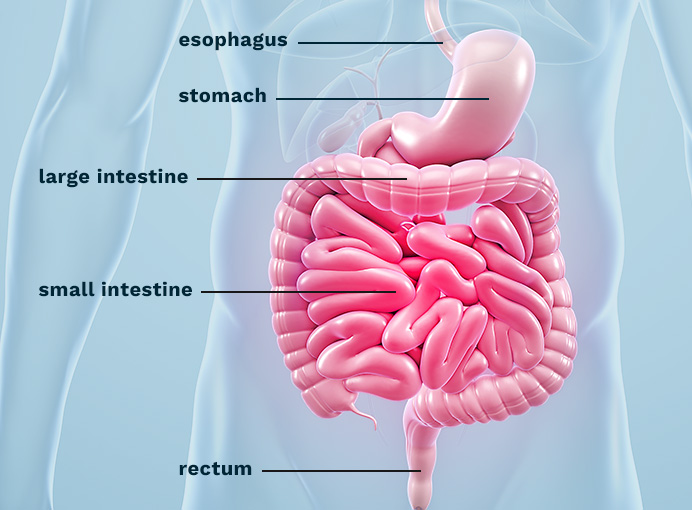Crohn’s Disease
Studies debate the extent of the connection between Crohn’s disease and celiac disease, but all conclude that Crohn’s disease is more common in those with celiac disease than in the general population. Overlapping symptoms include: abdominal pain, diarrhea, anemia, and short stature.

Ulcerative colitis and Crohn’s disease together make up a category of diseases called inflammatory bowel disease (commonly abbreviated as IBD, not to be confused with IBS, irritable bowel syndrome).
Crohn’s disease can affect any part of the gastrointestinal tract, from where food enters your body in the mouth, to the anus. Symptoms vary with the area of the GI tract that is affected, and usually begin between the ages of 13 and 30.
Overlapping symptoms between Crohn’s disease and celiac disease include: abdominal pain, diarrhea, anemia, and short stature. Other symptoms include rectal bleeding, weight loss, and fever.
If you believe you have Crohn’s disease, you should speak with a healthcare provider who can confirm a diagnosis through laboratory tests, examination, imaging, and a colonoscopy.
Crohn’s Disease and Celiac Disease
Celiac disease and Crohn’s disease are both diseases that deal with inflammation of the intestines. Because abdominal pain and diarrhea are symptoms of both diseases, differentiation between Crohn’s disease and celiac disease can be difficult. It is often left to blood tests, as well as endoscopy and biopsy to determine which disease is present.
Blood tests for celiac disease and IBD look for different characteristics, so doctors are able to distinguish between the two based on results. Unlike Crohn’s disease, celiac disease symptoms usually disappear when patients adhere to a gluten-free diet.
Even with some conflicting data, most studies conclude that celiac disease is more common in IBD patients. Researchers believe the prevalence of Crohn’s disease is higher than ulcerative colitis in patients with celiac disease (Yang et. al).
Studies debate the extent of the connection between Crohn’s disease and celiac disease, but all conclude that Crohn's disease is more common in those with celiac disease than in the general population.
Studies debate the extent of the connection between Crohn’s disease and celiac disease, but all conclude that Crohn’s disease is more common in those with celiac disease than in the general population.
With this increased prevalence and many similar symptoms, some researchers suggest that patients over the age of 40 who are anemic or have chronic diarrhea and are diagnosed with celiac disease also have a colonoscopy to test for IBD. Others suggest Crohn’s disease patients try a gluten-free diet.
A topic of recent interest for researchers has been the genetics involved with IBD, celiac disease, and similar illnesses. Research has found common genetic differences between celiac disease and Crohn’s disease. Despite advances in research, there is still much more to be discovered about the genetic basis of and similarities between the two diseases.